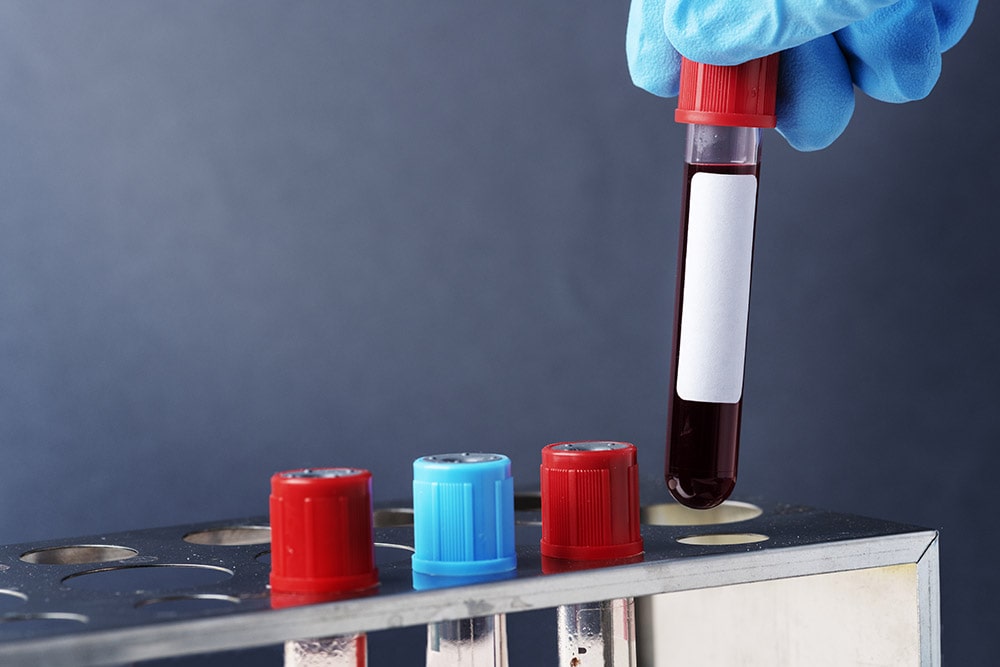Hemophilia is an inherited blood disorder.
It consists in abnormal blood clotting. The disease mainly affects the male sex. The blood clots due to proteins it contains called clotting factors. They are involved in the process of blood clotting, for example in an injury. If clotting is impaired it can lead to dangerous, sometimes life-threatening bleeding.

Hemophilia – causes
People with haemophilia have lower blood clotting factor VIII or IX than healthy people. This is the cause of longer bleeding after any injuries or procedures – rupture of the epidermis, tooth extraction, operations. The person is also prone to internal bleeding, such as gastrointestinal bleeding and bleeding into the brain. The latter is very dangerous and life threatening.
Hemophilia is an inherited disease. It is caused by a defect in the gene on the X chromosome that is responsible for the development of clotting factors. Haemophilia is mainly a male disease. This is because the gene can be passed on from mother to son. Males have XY chromosomes and females have XX. Consequently, males have a single X chromosome, so they have no way of replacing the defective gene. Women, on the other hand, may be carriers of the disease, but they will not develop it (this happens very rarely). For a girl to be born with hemophilia, she must have two faulty genes on both X chromosomes.
In rare cases, hemophilia is acquired as a result of a sudden genetic mutation. It also happens that the body can make antibodies that work against blood clotting factors and stop them from working.
A similar disease to hemophilia is von Willebrand disease. Just as hemophilia is associated with a bleeding disorder, the underlying factor is in a different gene, and therefore both men and women can develop it. Patients are exposed to frequent bleeding from the nose and gums, and women have more heavy and longer periods.
Types of hemophilia
Hemophilia is divided into two basic types – A and B.
Type A
In this variant, the patient lacks coagulation factor VIII. This is the most common type, accounting for over 70% of all cases.
Type B
Here we are dealing with a lack of factor IX. This type is also known as “Christmas sickness”.
Both types of haemophilia can be mild, moderate, and severe. Mostly it is a mild variety (over 50%).
Symptoms
The main symptom is long bleeding from all kinds of scratches, abrasions, cuts. The hallmark symptoms of haemophilia include:
excessive bleeding from various wounds and wounds;
easy bruising;
frequent nosebleeds;
bleeding gums;
visible blood in the stool;
long and heavy menstruation;
blood in urine;
Bleeding may be in the joints (knees, elbows). There is swelling and pain when moving. The joints are hot to the touch.
A person with hemophilia is also at risk of very dangerous bleeding into the brain, which can be fatal. Symptoms of bleeding into the brain include:
severe headache;
dizziness;
vomiting;
seizures;
sight problems;
paralysis.
Hemophilia – diagnosis
The disease is diagnosed primarily after a detailed blood test, as well as a medical history.
A blood test will give your doctor a picture of your blood clotting time, as well as the levels of individual proteins and clotting factors. Pregnant women who are carriers of the disease can check the fetus as early as 10 weeks of pregnancy for the inheritance of hemophilia.
How is hemophilia treated?
Treatment consists primarily of administering the missing factor. It is administered intravenously. It may be derived from human healthy blood or it may be synthetic. Artificially produced factors are more beneficial and preferred by doctors because they eliminate the risk of other blood borne diseases.
Another treatment for haemophilia A is desmopressin, an artificial hormone that stimulates the release of factor VIII, as well as anti-fibrinolytics.
Finally, a few words on how to live with this disease. Hemophilia cannot be completely cured, but you can live with it. There are ways to minimize excessive bleeding. These are for example:
not taking aspirin and other blood-thinning NSAIDs;
using a soft toothbrush;
practicing non-contact sports so as not to risk injuries and injuries;
in winter, wear shoes with a suitable, firm sole to prevent falls and breaks.

